Even Albert Einstein himself didn’t believe we’d be able to detect gravitational waves from the merger of two black holes.
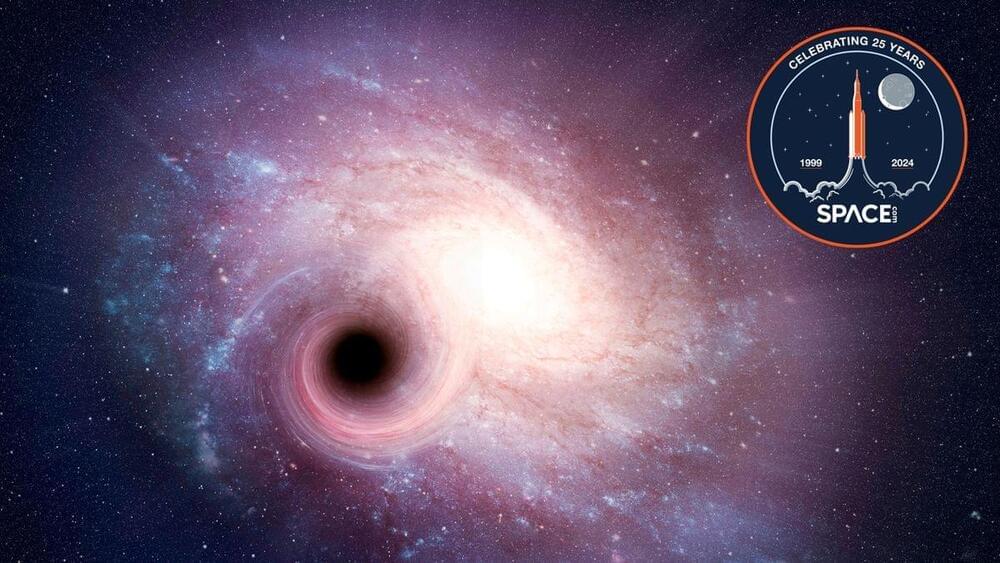

Researchers have confirmed the presence of an intermediate-mass black hole in the core of Omega Centauri, a cluster that once formed the heart of a separate galaxy. This finding enhances our understanding of black hole evolution and galaxy dynamics. (Artist’s concept.) Credit: SciTechDaily.com.
Researchers confirmed an intermediate-mass black hole in Omega Centauri’s center, supporting theories of its origin as a distinct galaxy core merged with the Milky Way.
Newly identified fast-moving stars in the star cluster Omega Centauri provide solid evidence for a central black hole in the cluster. With at least 8,200 solar masses, it is the best candidate for a class of black holes astronomers have long believed to exist: intermediate-mass black holes, formed in the early stages of galaxy evolution. The discovery bolsters the case for Omega Centauri as the core region of a galaxy that was swallowed by the Milky Way billions of years ago. Stripped of its outer stars, that galaxy nucleus has remained “frozen in time” since then. The study has been published in the journal Nature.
Discover Sagan’s unique blend of scientific curiosity and philosophical introspection, as he seamlessly navigates the realms of cosmology and the human condition.
If you would like to support my work financially, you can donate here:
/ twt_pc.
All contributions are greatly appreciated!
Follow us on Facebook \& Twitter:
/ pl.curious.
/ twtatheist.
Email:
[email protected].
Sources:
1. BBC Desert Island Disc (1981)
• Carl Sagan — His Best Interview (1981)
2. Carl Sagan on The Tonight Show with Johnny Carson (1977)
• Carl Sagan on The Tonight Show with J…
3. Carl Sagan’s Lecture: The Age of Exploration (1994)
• Carl Sagan’s 1994 \
Dive into the world of tachyons, the elusive particles that might travel faster than light and hold the key to understanding dark matter and the universe’s expansion. Join us as we explore groundbreaking research that challenges our deepest physics laws and hints at a universe far stranger than we ever imagined. Don’t miss out on this thrilling cosmic journey!
Chapters:
00:00 Introduction.
00:39 Racing Beyond Light.
03:26 The Tachyon Universe Model.
05:57 Beyond Cosmology: Tachyons’ Broader Impact.
08:31 Outro.
08:44 Enjoy.
Visit our website for up-to-the-minute updates:
www.nasaspacenews.com.
Follow us.
Facebook: / nasaspacenews.
Twitter: / spacenewsnasa.
Join this channel to get access to these perks:
/ @nasaspacenewsagency.
#NSN #NASA #Astronomy#tachyons #fasterthanlight #darkmatter #universesecrets #cosmicacceleration #theoreticalphysics #Einsteintheory #supernovae #spacemysteries #cosmology #particlephysics #lightspeed #universeexpansion #sciencebreakthroughs #physicsexplained #futuretechnologies #spaceexploration #cosmos #astrophysics #modernphysics #sciencerevolution #relativitytheory #speedoflight #spacetime #universetheory #quantumphysics #energyphysics #newscience #cosmicphenomena #physicsresearch
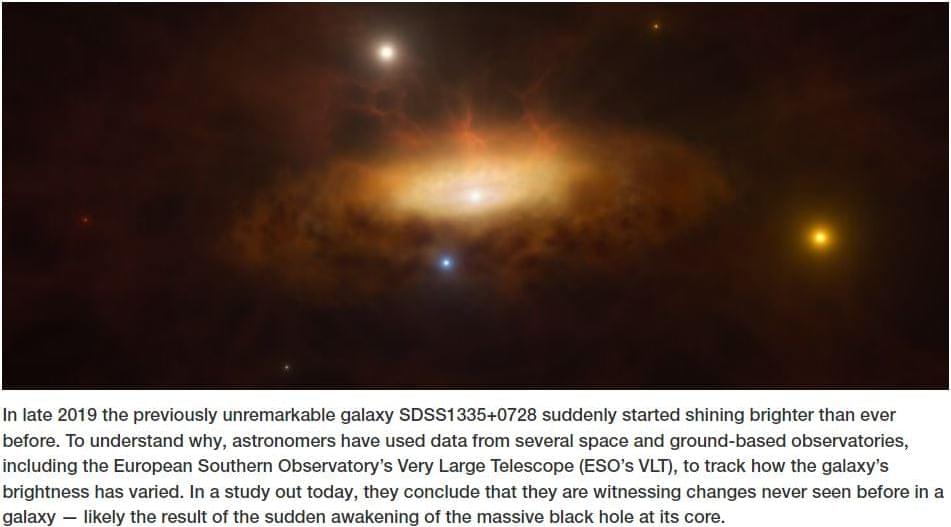
In late 2019 the previously unremarkable galaxy SDSS1335+0728 suddenly started shining brighter than ever before. To understand why, astronomers have used data from several space and ground-based observatories, including the European Southern Observatory’s Very Large Telescope (ESO’s VLT), to track how the galaxy’s @brightness has varied. In a study out today, they conclude that they are witnessing changes never seen before in a galaxy – likely the result of the sudden awakening of the massive black hole at its core.
“Imagine you’ve been observing a distant galaxy for years, and it always seemed calm and inactive,” says Paula Sánchez Sáez, an astronomer at ESO in Germany and lead author of the study accepted for publication in Astronomy & Astrophysics. “Suddenly, its [core] starts showing dramatic changes in brightness, unlike any typical events we’ve seen before.” This is what happened to SDSS1335+0728, which is now classified as having an ‘active galactic nucleus’ (AGN) — a bright compact region powered by a massive black hole — after it brightened dramatically in December 2019 [1].
Some phenomena, like supernova explosions or tidal disruption events — when a star gets too close to a black hole and is torn apart — can make galaxies suddenly light up. But these brightness variations typically last only a few dozen or, at most, a few hundreds of days. SDSS1335+0728 is still growing brighter today, more than four years after it was first seen to ‘switch on’. Moreover, the variations detected in the galaxy, which is located 300 million light-years away in the constellation Virgo, are unlike any seen before, pointing astronomers towards a different explanation.
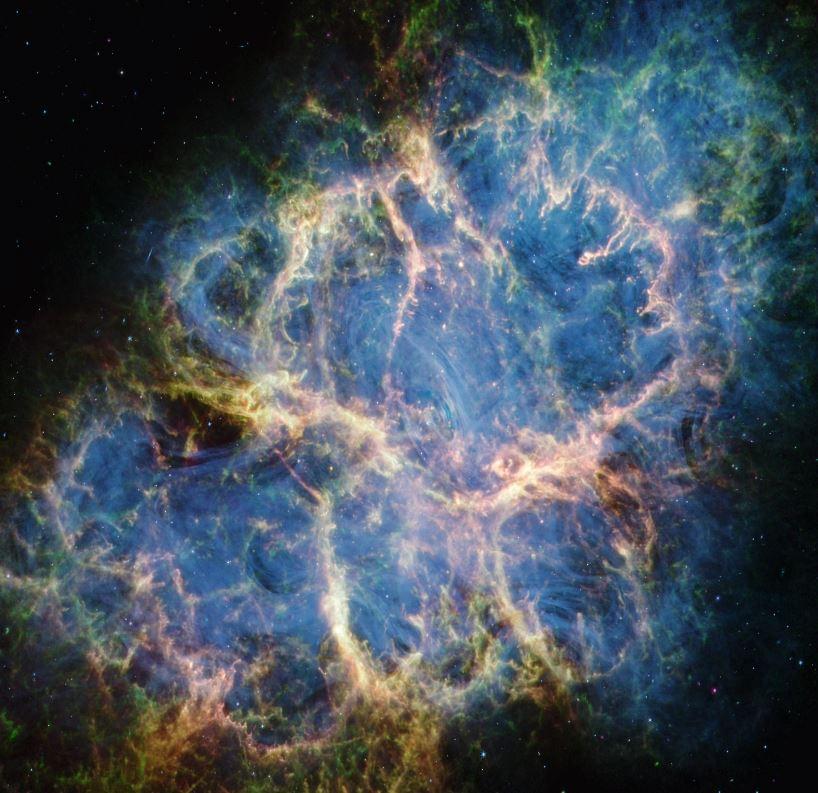
A team of scientists used NASA’s James Webb Space Telescope to parse the composition of the Crab Nebula, a supernova remnant located 6,500 light-years away in the constellation Taurus. With the telescope’s MIRI (Mid-Infrared Instrument) and NIRCam (Near-Infrared Camera), the team gathered data that is helping to clarify the Crab Nebula’s history.
The Crab Nebula is the result of a core-collapse supernova from the death of a massive star. The supernova explosion itself was seen on Earth in 1,054 CE and was bright enough to view during the daytime. The much fainter remnant observed today is an expanding shell of gas and dust, and outflowing wind powered by a pulsar, a rapidly spinning and highly magnetized neutron star.
The Crab Nebula is also highly unusual. Its atypical composition and very low explosion energy previously have been explained by an electron-capture supernova — a rare type of explosion that arises from a star with a less-evolved core made of oxygen, neon, and magnesium, rather than a more typical iron core.
Katie Mack, Perimeter Institute’s Hawking Chair in Cosmology and Science Communication, takes us on journey through time by exploring the cosmic microwave background (CMB), the faint glow from the Big Bang.
The CMB shows us the universe as it was 13.8 billion years ago, revealing secrets about its…
In this episode of Cosmology 101, we journey through time by exploring the cosmic microwave background (CMB), the faint glow from the Big Bang.
The CMB shows us the universe as it was 13.8 billion years ago, revealing secrets about its origins and composition. Discover how this ancient light provides insights into the early universe and helps us understand the cosmos we see today.
Join Katie Mack, Perimeter Institute’s Hawking Chair in Cosmology and Science Communication, on an incredible journey through the cosmos in our new series, Cosmology 101.
Sign up for our newsletter and download exclusive cosmology posters at: https://landing.perimeterinstitute.ca…

Wormholes, a captivating theoretical concept, offer a potential shortcut through space and time—a celestial tunnel connecting distant points through the intricate fabric of space-time. The inception of this idea dates all the way back to 1935 when Albert Einstein and Nathan Rosen proposed the concept of a wormhole, also known as an Einstein-Rosen bridge, as a unique solution within the framework of Einstein’s General Relativity(GR). The hypothetical existence of wormholes carries profound implications for space travel, such as the ability to traverse vast cosmic distances in remarkably short durations, and exploring their properties and implications could provide important information about the structure of space-time itself.
Furthermore, being closely linked to other perplexing cosmic phenomena, such as black holes, dark matter, and the enigmatic event known as the Big Bang—the cosmic genesis that set our universe into motion—wormholes have the potential to provide insights into these cosmic puzzles and deepen our understanding of the origin of the universe. Additionally, investigating wormholes could help bridge the gap between GR and quantum mechanics, which is currently one of the most important problems in theoretical physics.
Inspired by this, a team of researchers, led by Dr. P.K. Sahoo in collaboration with Mr. Zinnat Hassan from the Department of Mathematics at the Hyderabad Campus of Birla Institute of Technology (BITS) Pilani, recently delved into the investigation of wormholes. They focused on the modified teleparallel gravity framework with conformal symmetry within the context of non-commutative geometry. The primary objective of their research was to shed light on the specific conditions required for the existence of wormholes within the above framework. “The study of wormholes within the context of f(Q) symmetric teleparallel gravity with conformal symmetry under non-commutative geometry represents a sophisticated and specialized area of research in the field of theoretical physics and cosmology,” says Dr. Sahoo. Their findings were published in volume 437 of the journal Annals of Physics in February 2022.
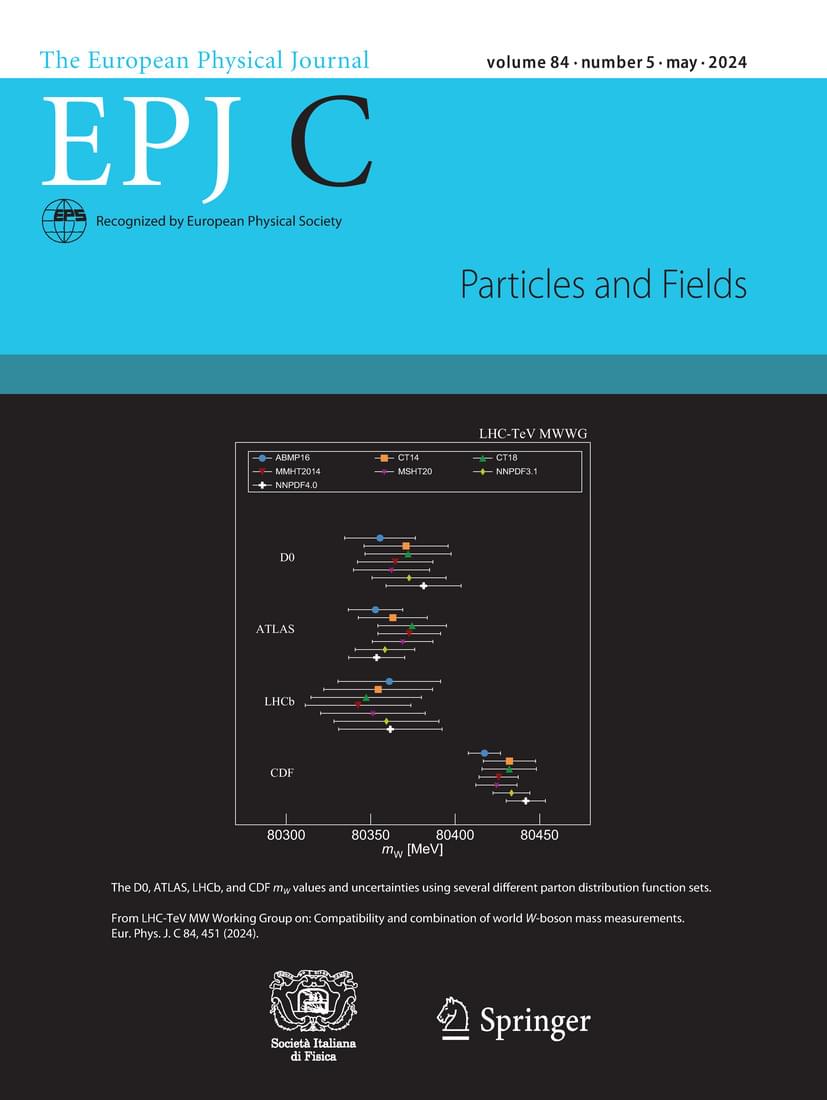
Numerous open questions in gravity theory become apparent from observations in cosmology, such as the cosmic microwave background radiation [1, 2, 3, 4, 5, 6], the large scale structure [7, 8], gravitational waves [9, 10] and supernovae [11]. In order to describe these observations, one needs to study the evolution of both the universe as a whole, modeled by a homogeneous and isotropic background geometry and matter distribution, as well as perturbations of this background. A thorough understanding of such cosmological perturbations and their dynamics imposed by the gravitational interaction is therefore an important necessity for describing and explaining the modern observations in cosmology.
Cosmological perturbations in gravity have been studied for a long time, starting with the case of (pseudo-)Riemannian spacetime geometry, which is employed by the standard formulation of general relativity and the most well-known class of its extensions, in which the gravitational interaction is attributed to the curvature of the metric-compatible, torsion-free Levi-Civita connection [,13,14,15]. This task is significantly simplified by the fact by understanding how perturbations transform under gauge transformations, i.e., infinitesimal diffeomorphisms which retain the nature of the spacetime geometry as a small perturbation of a cosmologically symmetric background. From these gauge transformations, one can derive a set of gauge-invariant perturbation variables, which describe the physical information contained in the metric perturbations as well as the perturbations of the matter variables, so that they become independent of the arbitrary gauge choice. The resulting gauge-invariant perturbation theory is one of the cornerstones of modern cosmology [16,17,18,19].
Despite its overwhelming success in describing observations from laboratory scales up to galactic scales, general relativity is challenged by the aforementioned open questions, as well as the open question how it can be reconciled with quantum theory. This situation motivates the study of modified gravity theories [20]. While numerous theories depart from the standard formulation of general relativity in terms of the curvature of the Levi-Civita connection of a Riemannian spacetime, also other formulations in terms of the torsion or nonmetricity of a flat connection exist and can be used as potential starting points for the construction of modified gravity theories [21, 22]. Focusing on general relativity alone, one finds that these formulations are equivalent in the sense that they lead to field equations which possess the same solutions for the metric irrespective of the geometric properties of the connection under consideration…
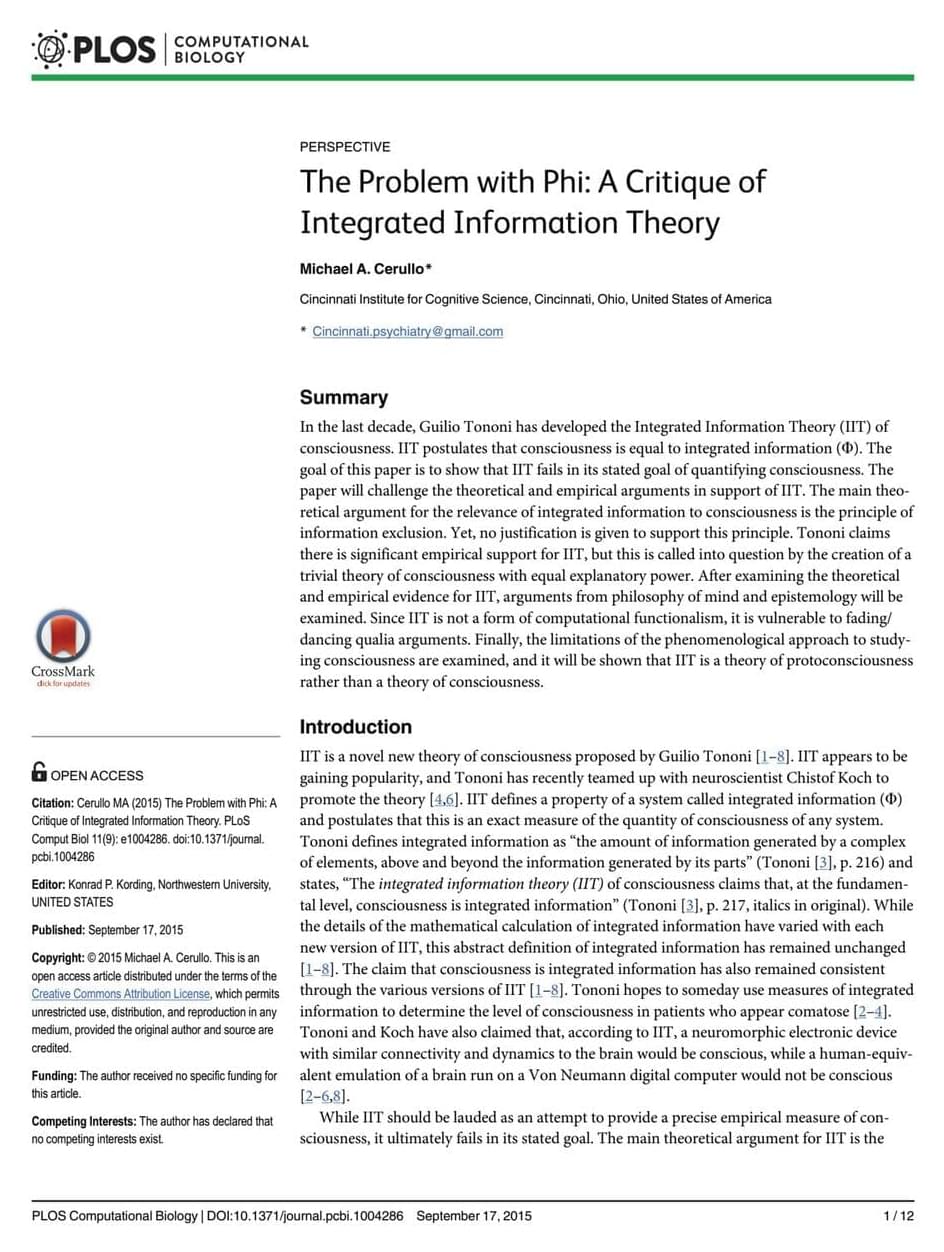
But when it comes to the origin of the Universe, we don’t know what forces are at play. We actually can’t know, since to know such force (or better, such fields and their interactions) would necessitate knowledge of the initial state of the Universe. And how could we possibly glean information from such a state in some uncontroversial way? In more prosaic terms, it would mean that we could know what the Universe was like as it came into existence. This would require a god’s eye view of the initial state of the Universe, a kind of objective separation between us and the proto-Universe that is about to become the Universe we live in. It would mean we had a complete knowledge of all the physical forces in the Universe, a final theory of everything. But how could we ever know if what we call the theory of everything is a complete description of all that exists? We couldn’t, as this would assume we know all of physical reality, which is an impossibility. There could always be another force of nature, lurking in the shadows of our ignorance.
At the origin of the Universe, the very notion of cause and objectivity get entangled into a single unknowable, since we can’t possibly know the initial state of the Universe. We can, of course, construct models and test them against what we can measure of the Universe. But concordance is not a criterion for certainty. Different models may lead to the same concordance — the Universe we see — but we wouldn’t be able to distinguish between them since they come from an unknowable initial state. The first cause — the cause that must be uncaused and that unleashed all other causes — lies beyond the reach of scientific methodology as we know it. This doesn’t mean that we must invoke supernatural causes to fill the gap of our ignorance. A supernatural cause doesn’t explain in the way that scientific theories do; supernatural divine intervention is based on faith and not on data. It’s a personal choice, not a scientific one. It only helps those who believe.
Still, through a sequence of spectacular scientific discoveries, we have pieced together a cosmic history of exquisite detail and complexity. There are still many open gaps in our knowledge, and we shouldn’t expect otherwise. The next decades will see us making great progress in understanding many of the open cosmological questions of our time, such as the nature of dark matter and dark energy, and whether gravitational waves can tell us more about primordial inflation. But the problem of the first cause will remain open, as it doesn’t fit with the way we do science. This fact must, as Einstein wisely remarked, “fill a thinking person with a feeling of humility.” Not all questions need to be answered to be meaningful.